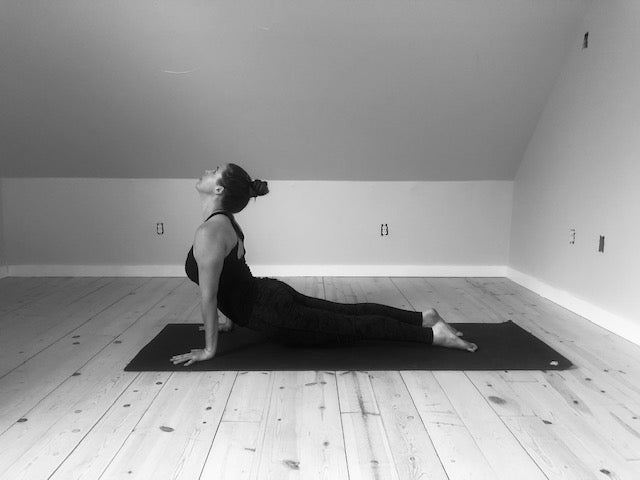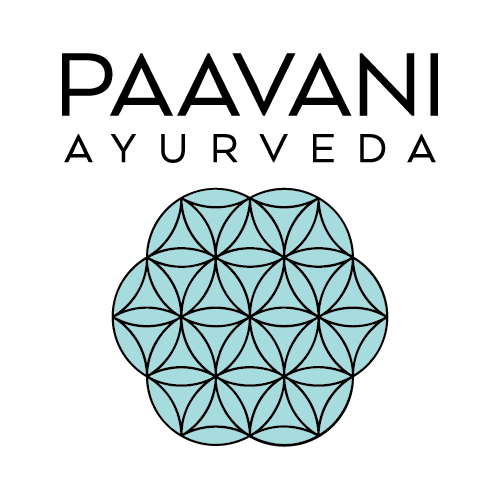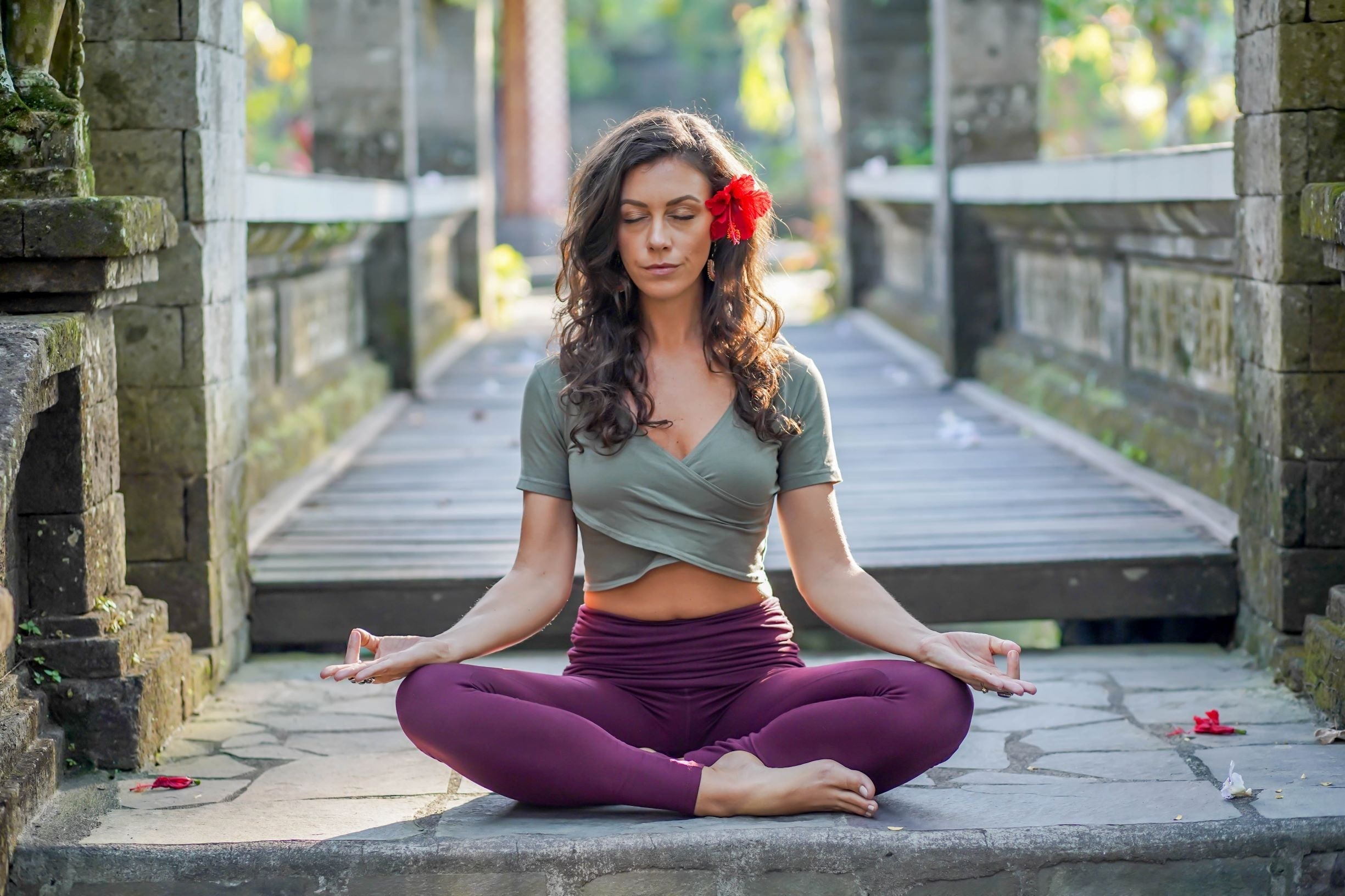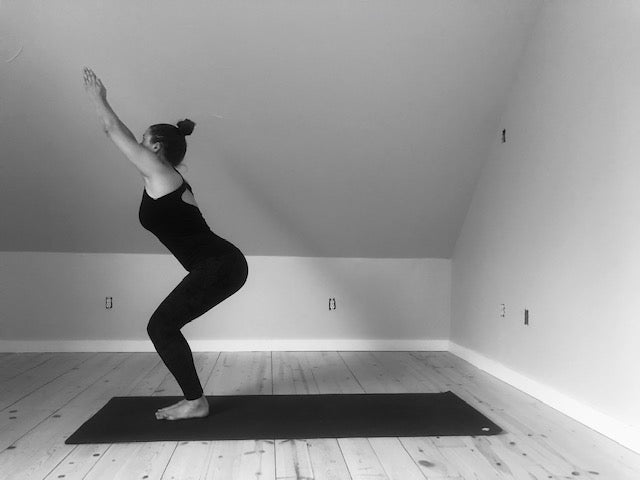
Surya Namaskar A: An Ayurvedic Guide to Sun Salutation A
Surya Namaskar A, or sun salutation A, is a series of 12 postures that are linked together with the breath. Sun salutations are traditionally practiced in the morning, as the sun rises, in order to greet the new day and establish balance within the doshas. As Dr. David Frawley explains in his book Yoga for Your Type: An Ayurvedic Approach to Your Asana Practice, sun salutations dispel the doshas from the spine, increase the downward moving energy of apana vayu, improve digestion, increase circulation, build heat, strengthen and stretch the body, reduce weight and promote vitality.
Looking at sun salutations from the Ayurvedic lens, this flowing series is beneficial for all three doshas; yet, each dosha should approach sun salutations with a unique set of guidelines in mind:
Vata- It is best for vata types or people experiencing excess vata to move slowly through Surya Namaskar A with awareness of the strength of the physical body as well as experiencing the grounding quality of the breath. Since vata tends to increase mobility, to counterbalance this, take an extra cycle of breath or two in each posture in order to slow down and connect with oneself. You can even omit the ‘vinyasa’, moving from chaturanga dandasana to urdvha mukha svanasana, in order to reduce the movement in this fluid sequence. Instead, hold Plank Pose and move directly into Downward Facing Dog.
Pitta- Due to the heating quality of Surya Namaskar A, pitta types or people experiencing excess pitta, should move slowly with attention to a smooth and calm breath. Sun salutations have the ability to expel excess heat from the body as its movements massage the digestive organs. In short, the purifying aspect of this series is beneficial for balancing pitta dosha. We recommend the practitioner move slowly and calmly through the series, letting go of self-judgement and releasing the need to compete with oneself or anyone else who may be practicing in the room.
Kapha- Quite the opposite of vata and pitta style sun salutations, kapha types or people working to balance excess kapha, should move swiftly and efficiently through Surya Namaskar A. Allow one breath per movement and welcome the cardiovascular component of the series into your body in order to break up congestion and move stagnant kapha out of your system. Sun salutes are one of the best ways to get kapha moving and uplift the senses; thus, we highly recommend this flow for balancing kapha dosha.
How to Do Surya Namaskar A:
1. Tadasana (Mountain Pose) with Prayer Hands

Begin with the feet hip distance apart and the hands in prayer position. Ground down into the feet, engage through the thighs, draw the tailbone slightly down, move the shoulders down the back and grow tall through the spine.
2. Urdhva Hastasana (Raised Hands Pose)

Inhale, reach the arms up overhead, with palms pressed together, and lift the gaze upward towards the hands. Draw the shoulders down the back.
3. Uttanasana (Standing Forward Fold)

Exhale, hinge at the hips, draw your hands through a prayer position and into a standing forward fold. Press the palms into the floor and bend the knees if necessary. Relax the neck and gaze towards the back of your mat. Continue to firm through the legs.
4. Ardha Uttanasana (Half Standing Forward Fold)

Keep the palms pressed to the floor and with an inhale, lift the head and lengthen through the spine. Bring the gaze down and slightly forward.
5. Phalakasana (Plank Pose)*

With your next exhalation, step or hop back to plank pose. Have the palms flat on the floor and underneath the shoulders. The feet are hip distance apart and engage the legs. Have the gaze down on the mat. Take a full breath in and lengthen the neck and spine.
*As an alternative, you can keep the knees on the floor in Plank Pose.
6. Chaturanga Dandasana (Four Limbed Staff Pose)*

Exhale, bend the elbows and keep them drawn into the ribs, or the midline of the body, to slowly lower half way down and hold. Keep the legs strong and press back through your heels.
*As an alternative, you can keep the knees on the floor for Four Limbed Staff Pose.
7. Urdhva Mukha Svanasana (Upward Facing Dog)

Inhale, roll over the toes, straighten the arms and come into Upward Facing Dog. In this posture, the palms, knuckles and fingers firmly root into the mat while the shoulder blades squeeze together and move down the back. Press into the tops of the feet and lift the thighs up and away from the mat. Lengthen the tailbone toward the heels and expand the heart open. If possible, lift the gaze up towards the ceiling or sky.
8. Adho Mukha Svanasana (Downward Facing Dog)

Exhale, tuck the toes, lift the hips up and back into Downward Facing Dog. Continue to ground the palms, knuckles and fingers into the mat and move the shoulders away from one another and down the back. Bring your gaze towards the navel center. Lengthen through the spine, engage through the thighs, open through the hamstrings and draw the heels of the feet towards the mat. Take 3- 5 breaths.
9. Ardha Uttanasana (Half Standing Forward Fold)

Inhale and step the feet towards the front of your mat, back into Half Standing Forward Fold.
10. Uttanasana (Standing Forward Fold)

Exhale, release the head and come into Standing Forward Fold.
11. Urdhva Hastasana (Raised Hands Pose)

nhale, reach the arms up overhead with palms pressed together and lift the gaze upward towards the hands. Draw the shoulders down the back.
12. Tadasana (mountain pose)

Exhale, bring the hands by your sides with the chin parallel to the ground and bring your gaze forward.
Complete 3-5 rounds of Surya Namaskar A for a short yet complete Yoga practice or continue to Surya Namaskar B to continue warming up and strengthening the body.
Precautions:
Contraindications for Surya Namaskar A:





Leave a comment
This site is protected by hCaptcha and the hCaptcha Privacy Policy and Terms of Service apply.